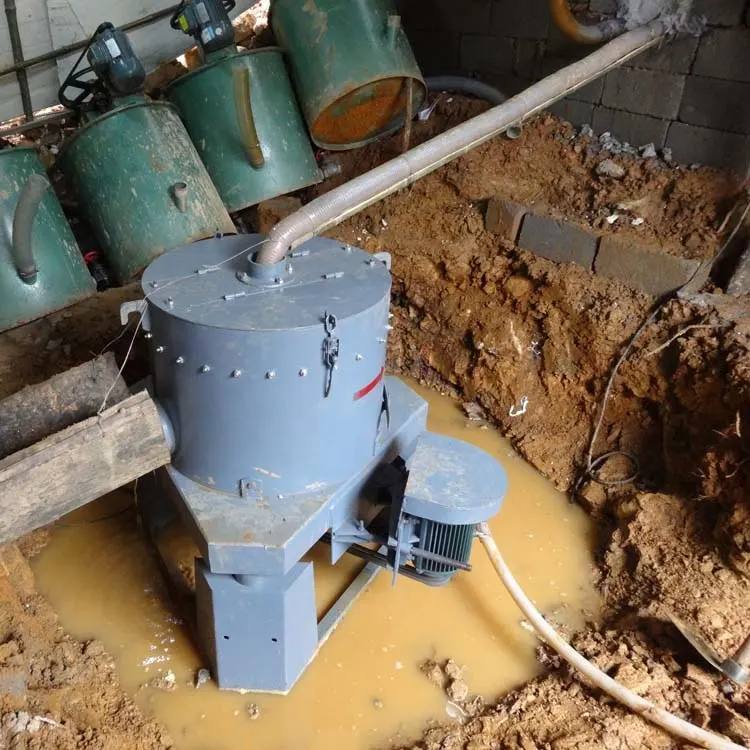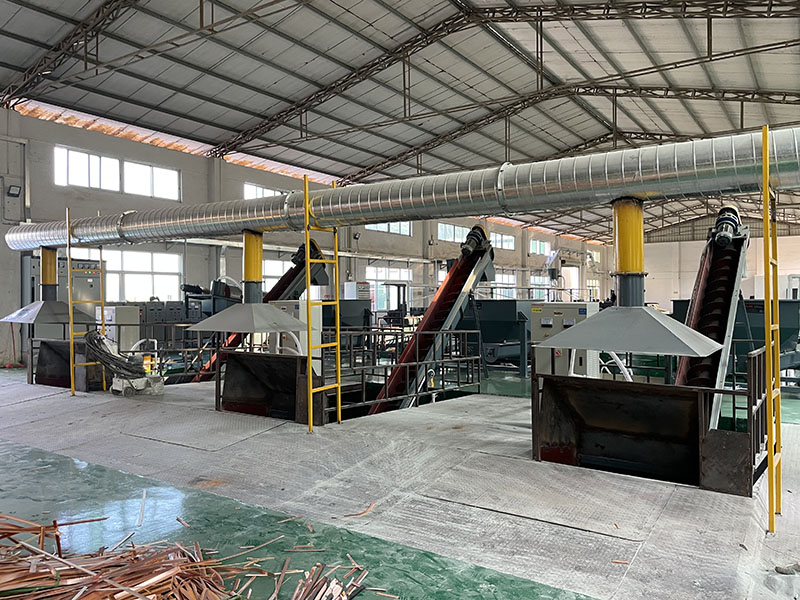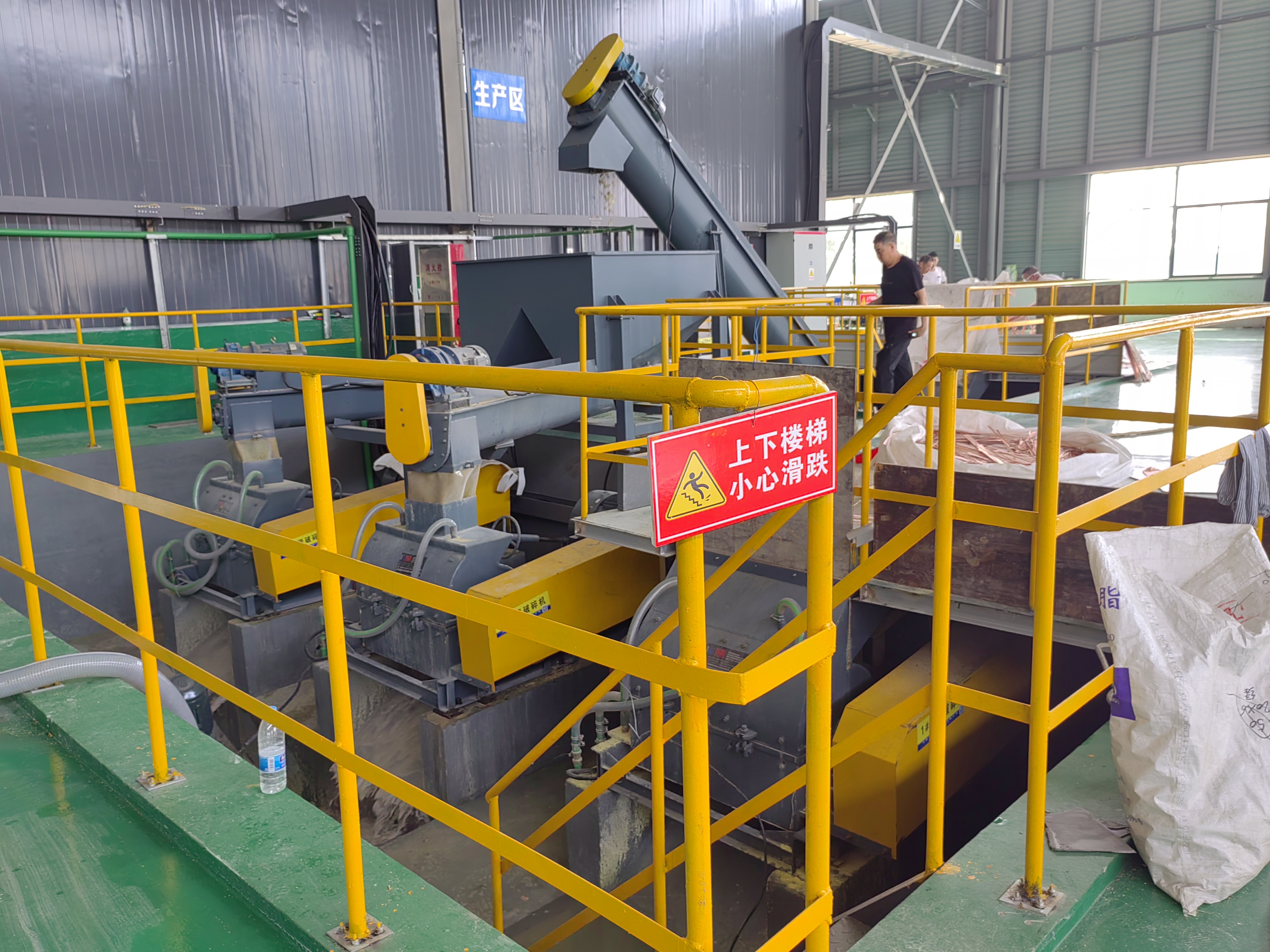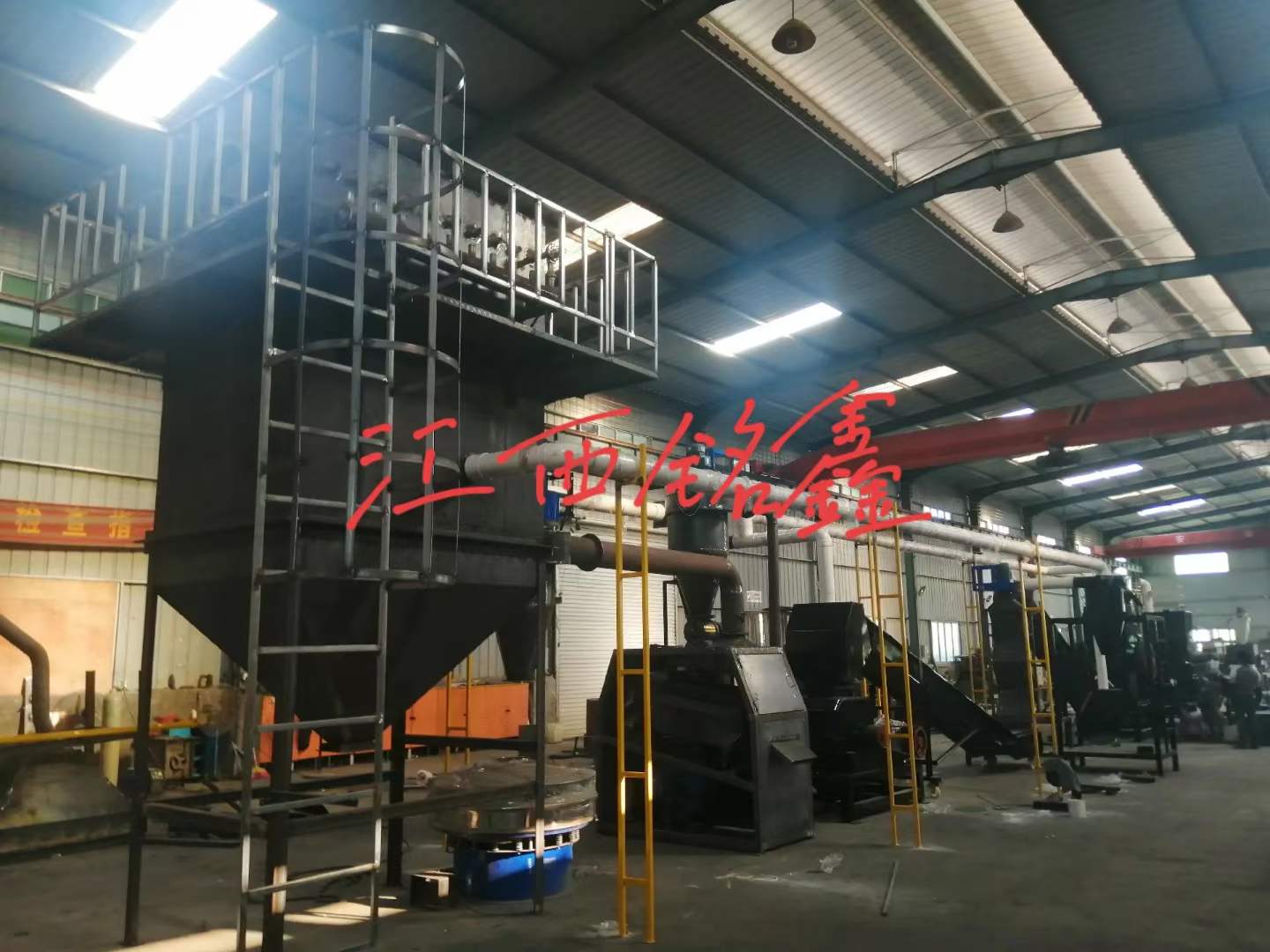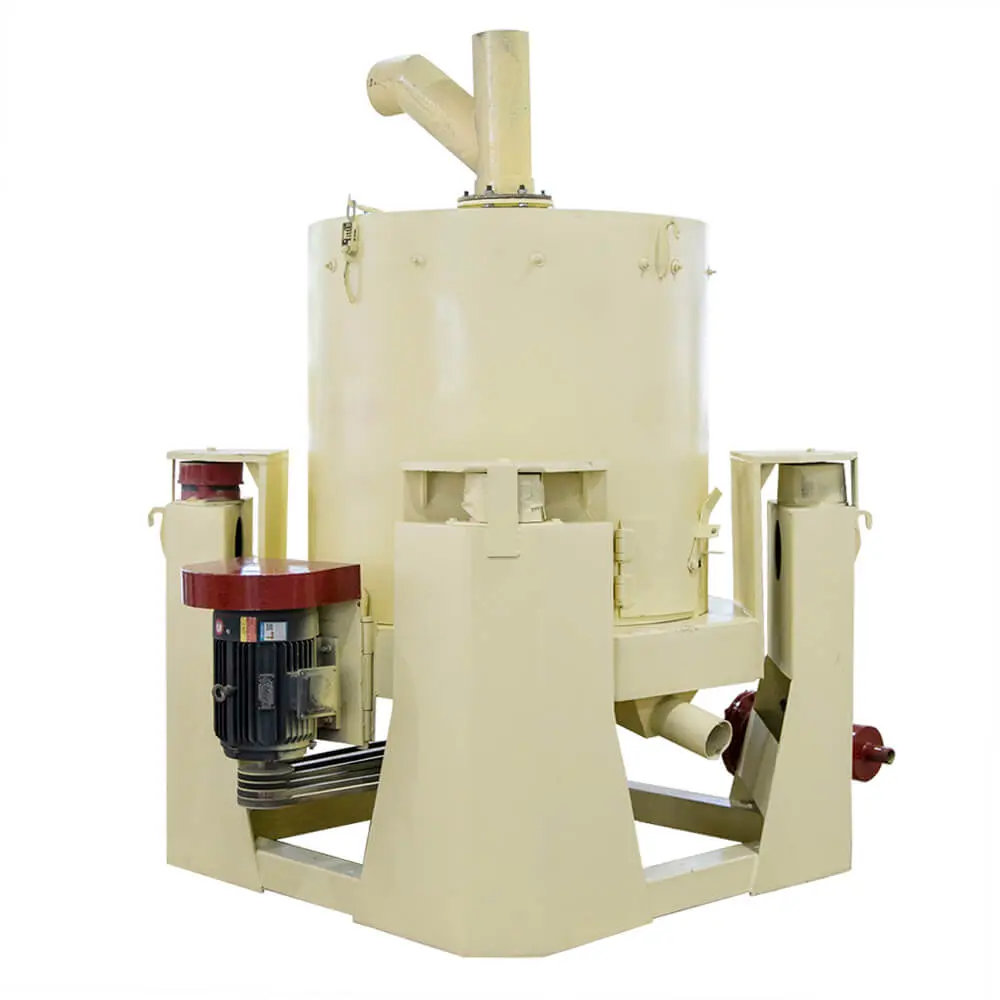
The Gold Centrifuge Concentrator is a machine patented in China. It is an effective machine for the recovery of free gold in all particle size ranges. It is particularly useful for recovering fine gold that is lost during the operation of a gravity concentrator. It is not only used in alluvial gold mining, but can also be used to recover natural gold from hard rock in lieu of amalgam and to recover gold from tailings.
Gold Centrifugal Concentrator is a device that uses centrifugal force to separate and concentrate substances, which is widely used in the fields of biology, chemistry, medicine and food. Its working principle is based on the difference in centrifugal force generated by substances spinning at high speed, thus achieving the separation of substances with different densities.
When the centrifugal concentrator is working, the sample is placed in the centrifuge tube. With the high-speed rotation of the centrifuge, the solid particles or high-density molecules in the sample will be deposited at the bottom of the centrifuge tube due to the centrifugal force, while the low-density or small-molecule substances will remain in the supernatant. By controlling the magnitude and duration of the centrifugal force, the target substances can be effectively separated and concentrated.
Fields of application
Gold centrifugal concentrator has a wide range of application fields, mainly including:
Biomedical research: in the field of biomedicine, centrifugal concentrators are used for cell separation, protein purification, nucleic acid extraction and other experiments, which help to improve the experimental efficiency and accuracy of the results.
Pharmaceutical industry: In the pharmaceutical industry, centrifugal concentrators are used for the extraction, concentration and crystallisation of drug components to improve the purity and efficacy of drugs.
Food industry: In food processing, centrifugal concentrators are used for the concentration of fruit juice, dairy products and other products to enhance the nutritional value and taste of food.
Environmental monitoring: In environmental science, centrifugal concentrators are used for pre-treatment of water and soil samples, which helps to improve the sensitivity and accuracy of pollutant detection.
Chemical analysis: In the field of chemical analysis, centrifugal concentrators are used to separate and enrich trace elements, improving the sensitivity and accuracy of analysis.
Working principle and technical characteristics
2.1 Centrifugal force field
The centrifugal force field of the gold centrifuge is its core working principle. Under the action of the centrifugal force generated by the high-speed rotating head, solid particles or high-density molecules in the sample are deposited at the bottom of the centrifuge tube, while low-density or small-molecule substances remain in the supernatant. The efficiency and effectiveness of this separation process depends on the magnitude and duration of the centrifugal force.
The magnitude of centrifugal force is usually expressed in terms of relative centrifugal force (RCF), which is calculated by the formula:
RCF=1.118×10?5×n2×r×g
where
n
n is the rotational speed of the rotary head (in revolutions per minute), and
r
r is the radius of rotation in centimetres, and
g
g is the gravitational acceleration.
The experimental data show that the RCF value changes significantly at different rotational speeds and radii, thus affecting the separation effect. For example, when the rotational speed is increased from 5000 rpm to 10000 rpm, the RCF value can be increased by 4 times, which significantly improves the separation efficiency.
2.2 Decompression evaporation under vacuum environment
Gold centrifugal concentrators are usually equipped with a vacuum system to lower the boiling point of the sample and accelerate the evaporation process of the solvent. Under vacuum, solvent molecules are more easily converted from the liquid phase to the gas phase, thus facilitating the concentration process.
An increase in vacuum can significantly lower the boiling point of a solvent. For example, water, which boils at 100°C at atmospheric pressure, can be reduced to around 40°C at 100 mbar. This low-temperature evaporation process helps to protect the biological activity of heat-sensitive samples.
The efficiency of the vacuum system depends on the performance of the vacuum pump and the design of the cold trap. A high-performance vacuum pump is able to extract gases quickly and create a stable vacuum environment. The cold trap, on the other hand, effectively traps evaporating solvents and prevents them from entering the vacuum pump, thus protecting the vacuum pump and improving solvent recovery.
2.3 Heat supplementation and control
During centrifugal concentration, heat supplementation is essential to accelerate the evaporation of solvents. However, too much heat may cause denaturation or inactivation of the sample. Therefore, heat control and supplementation needs to be precise and careful.
Heat is usually transferred to the sample by radiation or conduction. In vacuum centrifugal concentrators, radiant heating is often used to heat the sample indirectly by heating the chamber. The advantage of this type of heating is that there is no localised overheating of the sample, thus protecting the integrity of the sample.
The control of the heat replenishment is usually realised by means of a temperature control system. Modern centrifugal concentrators are equipped with precise temperature sensors and control systems capable of monitoring and regulating the sample temperature in real time. Some, for example, can accurately control the sample temperature over a range of 5°C to 80°C, ensuring that the sample remains at the right temperature during the concentration process.














